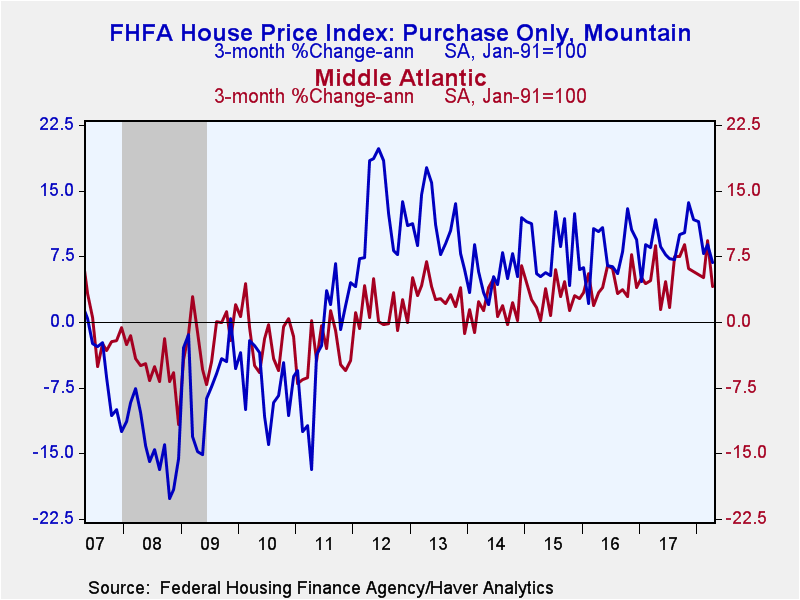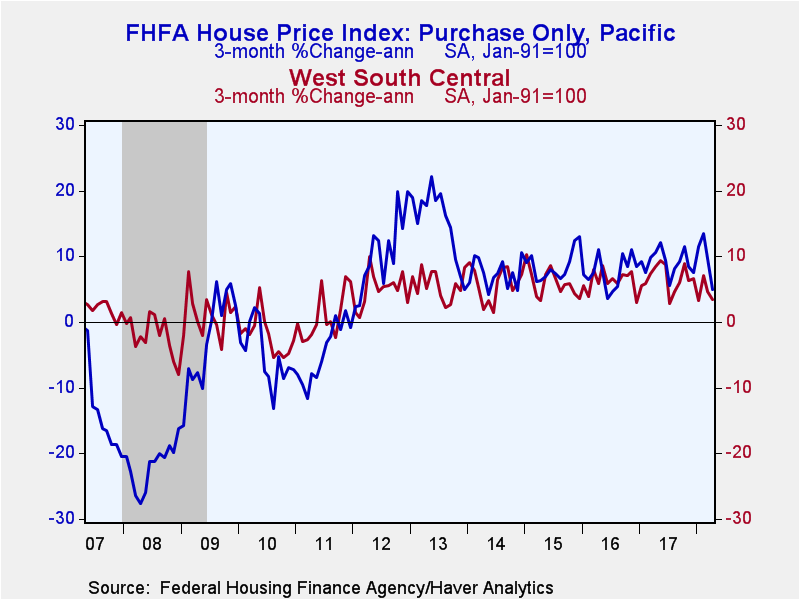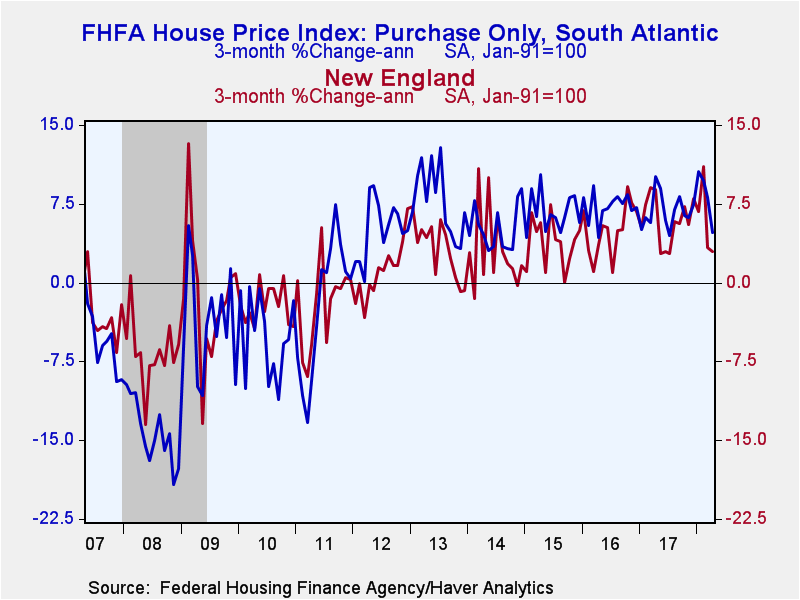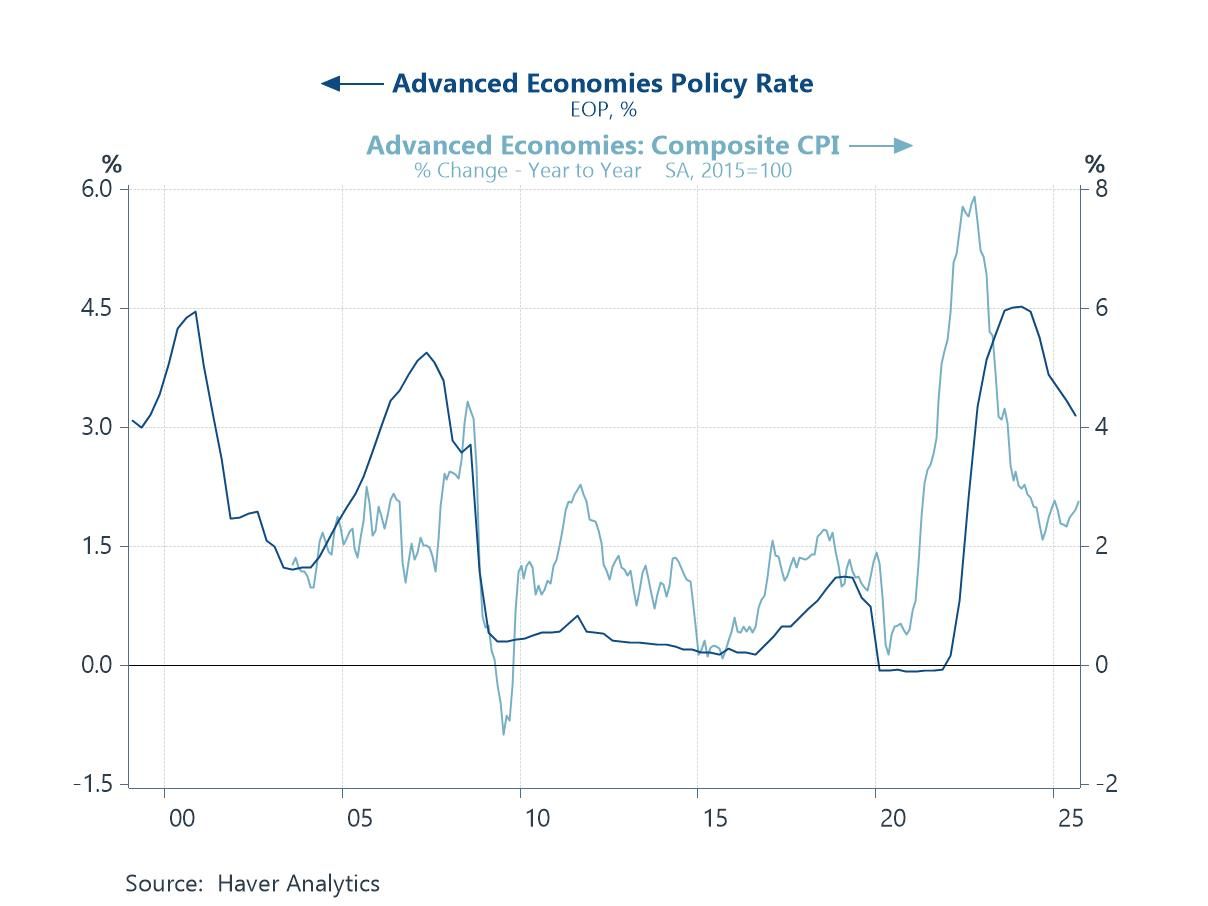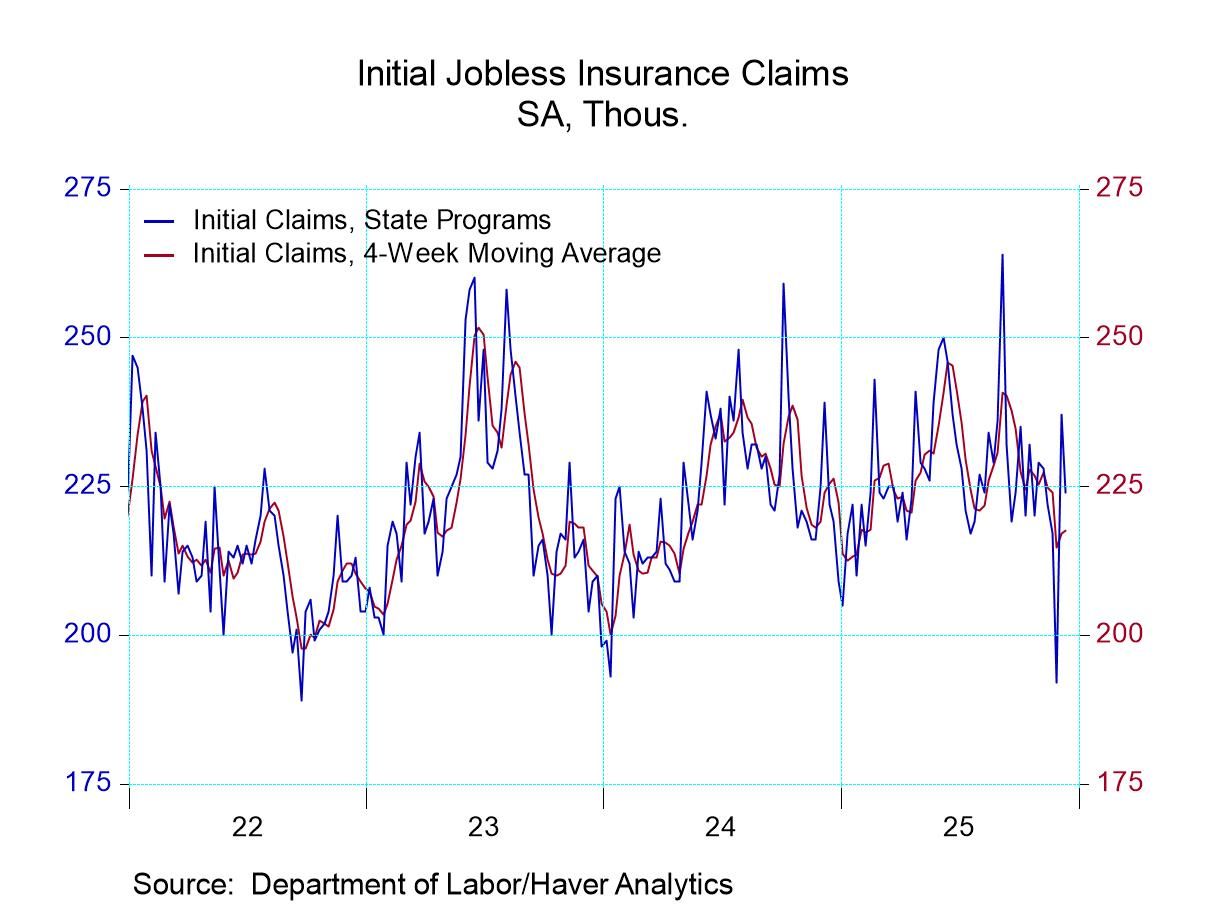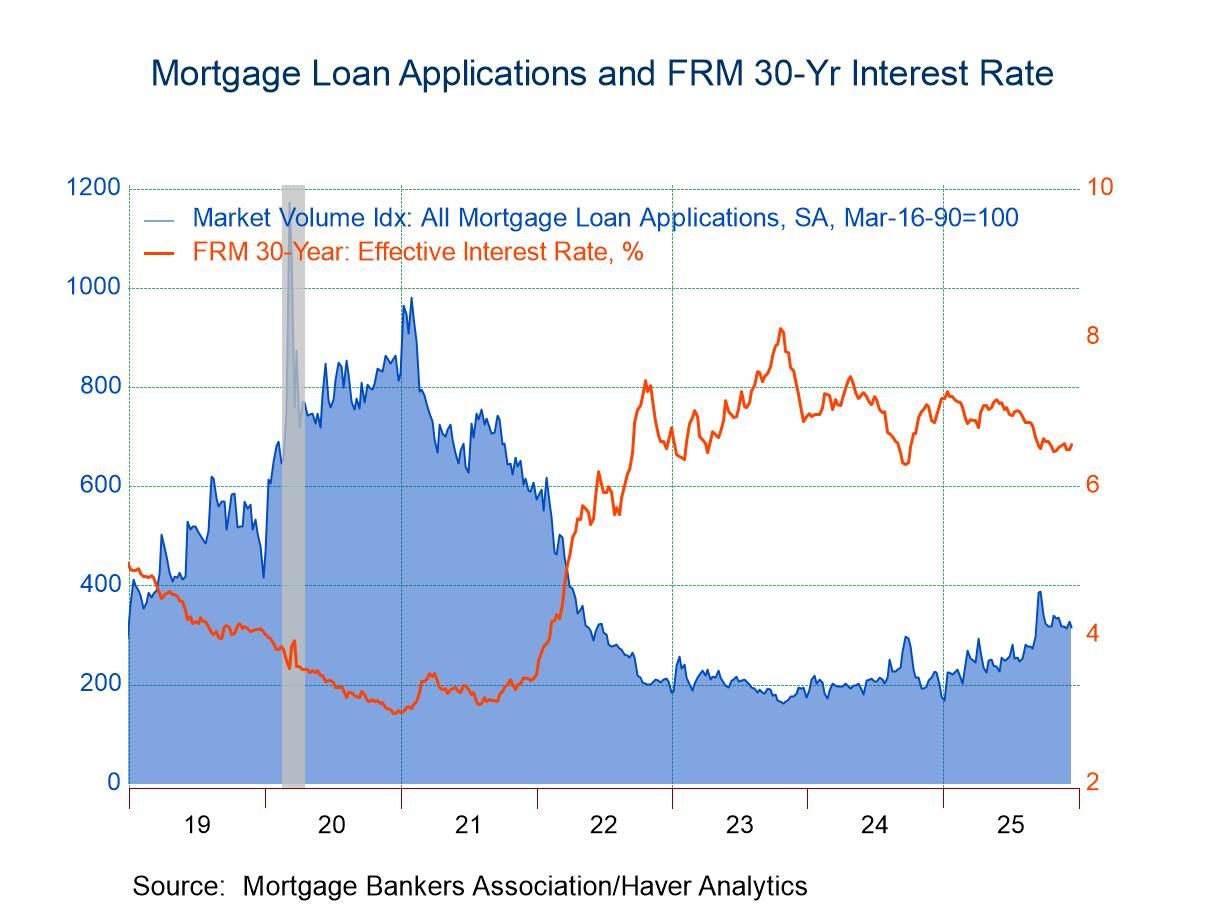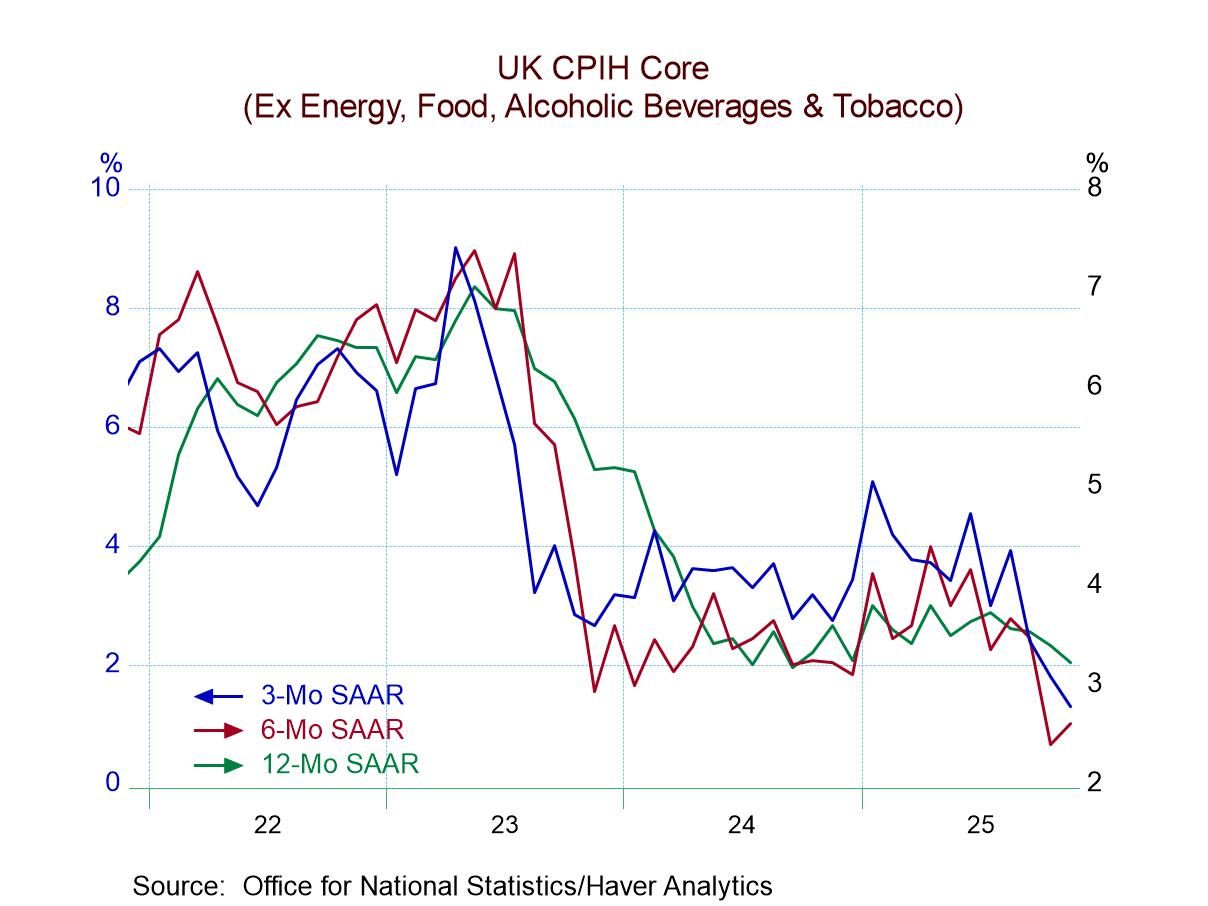 Global| Jun 21 2018
Global| Jun 21 2018U.S. FHFA House Price Index Improves Minimally
by:Tom Moeller
|in:Economy in Brief
Summary
The Federal Housing Finance Agency's (FHFA) index of U.S. house prices nudged 0.1% higher (6.4% y/y) during April after a 0.2% March rise, revised from 0.1%. Over the past three months, prices have risen at a 4.7% annual rate, down [...]
The Federal Housing Finance Agency's (FHFA) index of U.S. house prices nudged 0.1% higher (6.4% y/y) during April after a 0.2% March rise, revised from 0.1%. Over the past three months, prices have risen at a 4.7% annual rate, down from a 9.1% rate as of February.
Around the country, monthly home price depreciation occurred during April in the West South Central (+6.0% y/y) and the Middle Atlantic (+4.9% y/y) regions.
Versus last year, home prices in the Mountain (8.9% y/y) and Pacific (8.3% y/y) regions exhibited the strongest rates of growth.
Moderated annual growth rates were realized in the South Atlantic (6.6% y/y) and West North Central (6.0% y/y) regions of the country.
Weaker rates of home price increase were found in the East South Central (5.6% y/y) and New England (4.9% y/y) regions of the country.
The FHFA house price index is a weighted purchase-only index that measures average price changes in repeat sales of the same property. An associated quarterly index also includes refinancings on the same kinds of properties. The indexes are based on transactions involving conforming, conventional mortgages purchased or securitized by Fannie Mae or Freddie Mac. Only mortgage transactions on single-family properties are included. The FHFA data are available in Haver's USECON database.
| FHFA U.S. House Price Index, Purchase Only (SA %) |
Apr | Mar | Feb | Apr Y/Y | 2017 | 2016 | 2015 |
|---|---|---|---|---|---|---|---|
| Total | 0.1 | 0.2 | 0.8 | 6.4 | 6.7 | 6.1 | 5.4 |
| Mountain | 0.4 | 0.9 | 0.3 | 8.9 | 8.8 | 7.9 | 7.7 |
| Pacific | 0.1 | -0.3 | 1.4 | 8.3 | 8.8 | 8.1 | 7.8 |
| East North Central | 0.6 | -0.1 | 0.7 | 6.6 | 6.1 | 5.4 | 4.4 |
| South Atlantic | 0.3 | 0.3 | 0.6 | 6.5 | 7.0 | 7.0 | 6.2 |
| West South Central | -0.5 | -0.2 | 1.6 | 6.0 | 6.6 | 6.0 | 6.2 |
| West North Central | 0.6 | -0.1 | 0.7 | 6.0 | 5.5 | 5.6 | 4.1 |
| East South Central | 0.4 | -0.4 | 1.0 | 5.6 | 5.9 | 5.1 | 4.6 |
| Middle Atlantic | -0.4 | 1.2 | 0.1 | 4.9 | 5.0 | 3.7 | 2.6 |
| New England | 0.5 | -0.8 | 1.0 | 4.9 | 5.9 | 4.1 | 3.3 |
Mountain: Montana, Idaho, Wyoming, Nevada, Utah,
Colorado, Arizona and New Mexico.
South Atlantic: Delaware, Maryland, D.C., Virginia, West Virginia,
North Carolina, South Carolina, Georgia and Florida.
Pacific: Alaska, California, Hawaii, Oregon, Washington.
West South Central: Oklahoma, Arkansas, Texas and Louisiana.
East North Central: Michigan, Wisconsin, Illinois, Indiana and Ohio.
East South Central: Kentucky, Tennessee, Mississippi and Alabama.
New England: Maine, New Hampshire, Vermont, Massachusetts, Rhode
Island and Connecticut.
Middle Atlantic: New York, New Jersey and Pennsylvania.
West North Central: North Dakota, South Dakota, Minnesota, Nebraska,
Iowa, Kansas and Missouri.
Tom Moeller
AuthorMore in Author Profile »Prior to joining Haver Analytics in 2000, Mr. Moeller worked as the Economist at Chancellor Capital Management from 1985 to 1999. There, he developed comprehensive economic forecasts and interpreted economic data for equity and fixed income portfolio managers. Also at Chancellor, Mr. Moeller worked as an equity analyst and was responsible for researching and rating companies in the economically sensitive automobile and housing industries for investment in Chancellor’s equity portfolio. Prior to joining Chancellor, Mr. Moeller was an Economist at Citibank from 1979 to 1984. He also analyzed pricing behavior in the metals industry for the Council on Wage and Price Stability in Washington, D.C. In 1999, Mr. Moeller received the award for most accurate forecast from the Forecasters' Club of New York. From 1990 to 1992 he was President of the New York Association for Business Economists. Mr. Moeller earned an M.B.A. in Finance from Fordham University, where he graduated in 1987. He holds a Bachelor of Arts in Economics from George Washington University.



